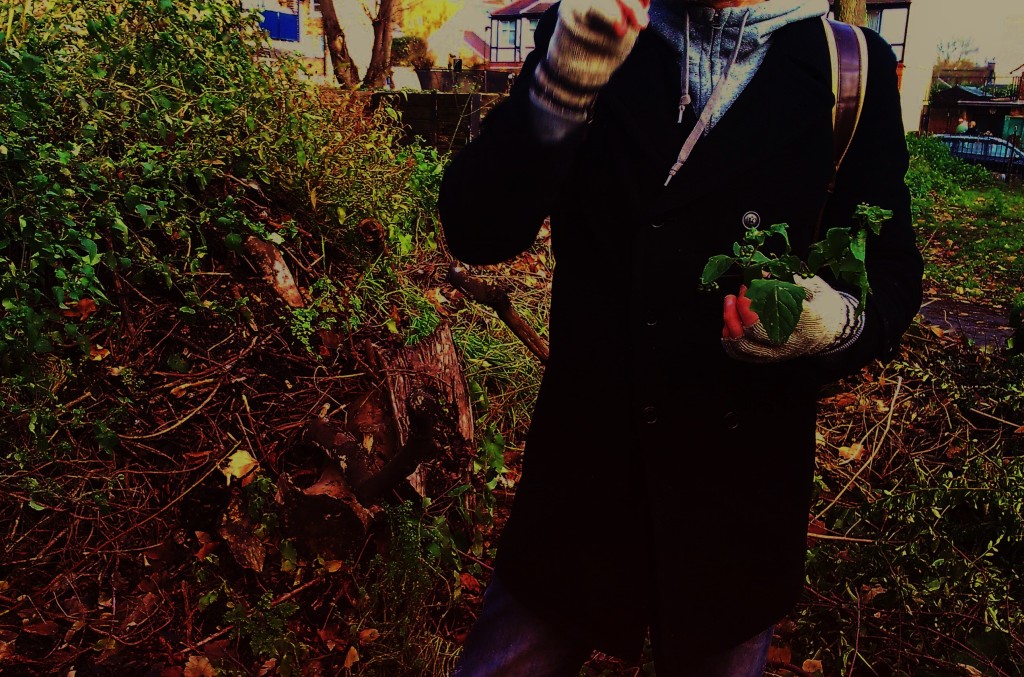Best-loved for lunch break picnics, London’s parks provide the ideal summertime escape for sun-starved office workers. But while we’re lolling around tucking into offerings from Itsu, we remain blissfully unaware of the vast array of sustenance sprouting up all around us. Intrigued by the current vogue for wild ingredients, I jumped on the foraging bandwagon and headed to Clissold Park to see what I could rustle up for my own lacklustre lunches.

Office Breaks urban foraging
Inspired by the likes of Hugh Fearnley-Whittingstall, foraging has recently witnessed a surge in popularity as restaurants seek out ever wilder ingredients to tempt the jaded palettes of their discerning diners. While a tramp through the River Cottage hinterland of Dorset would seem entirely feasible, how would high-rise Hackney fare?
Greeted by a sea of churned up turf and bare branches clawing the air, Clissold Park seemed an unpromising start for my first taste of urban foraging. Trudging with trepidation, I join our hardy group for our winter salads tour on a bitterly cold Sunday morning.

Office Breaks Foraging in London
Guided by our charismatic leader John, we waste no time in getting down and dirty among the dandelions, much to the bemusement of the park’s many wandering dogs. With over two hundred species of edible plants in the UK, there’s an amazing array of plant life that we’ve apparently shunned for years. John explains that this is mainly due to our preference for sweet flavours over the healthier bitter tastes which are rife among many of the plants that we’ll be trying today.

Office Breaks Foraging in London
Positive identification is crucial as many species are deadly and we’re taught that if in doubt, to taste test one leaf the night before using it. Our first find is the seemingly innocuous cow parsley which turns out to be a member of the notorious carrot family. We take note careful note of its distinguishing features to avoid munching mistakenly on poisonous hemlock, which fortunately is not in season. Asked to describe the taste of cow parsley, our accounts vary widely from carrotts to liquorice to aniseed highlighting the individual nature of our sense of taste.

Office Breaks Foraging in London
Moving on, our next discovery is feverfew. Best known for its medicinal properties, today it’s widely used for migraine relief and was formerly a tincture for skin ailments including insect bites. It can also now be used in salads or brewed for tea provided you can withstand its bitter taste.

Office Breaks Foraging in London
Continuing the medicinal theme, we stumble across some wood avens. A wallflower of the edible plant scene, wood avens have been sadly relegated to nature’s neglected spice rack. Closely related to cloves, wood avens are loaded with tingling antiseptic properties, which as we soon discover, pack one hell of a punch in an Elderberry cordial. Concocted with cloves, wood avens, sugar and elderberries, the bright red liquid is bursting with anti-oxidants making it the ultimate anti-viral winter shot.

Office Breaks Forage London Wood avens
My find of the day is the Ox eye daisy which has a clean and refreshing chamomile taste and can be used to spruce up salads, desserts or if the notion takes you can even be tempura battered.

Office Breaks Foraging in London
Equally as aromatic is the dowdy mudwort which packs a surprising punch with its strong Rosemary overtones. Perfect in roast lamb, the versatile plant is also a powerful flavour enhancer for soups. Even more remarkable is mudwort’s reputed ability to stimulate lucid dreaming when packed into a pillow. Could this mean an end to stressful work-related dreams?

Office Breaks Forage London Mudwort
But the undisputed highlight of the visit is John’s home-brewed Beech leaf Noyau. Concocted from Beech leaves, gin, brandy, water and sugar, the nutty, warming brew swiftly warms the cockles and proves just the tonic we need to fend off North London’s arctic winds.

Office Breaks Forage London
Having only scratched the surface of the park’s bounty on this whirlwind foraging tour, I leave with a new-found respect for our parks’ abundant vegetation. Whether I’d be willing to swap Itsu chicken noodles for a wood aven and cow parsley salad remains to be seen but I’m definitely up for brewing a glass of two of Beech Leaf Noyau this spring.
For more information on London Foraging trips, visit: www.foragelondon.co.uk
